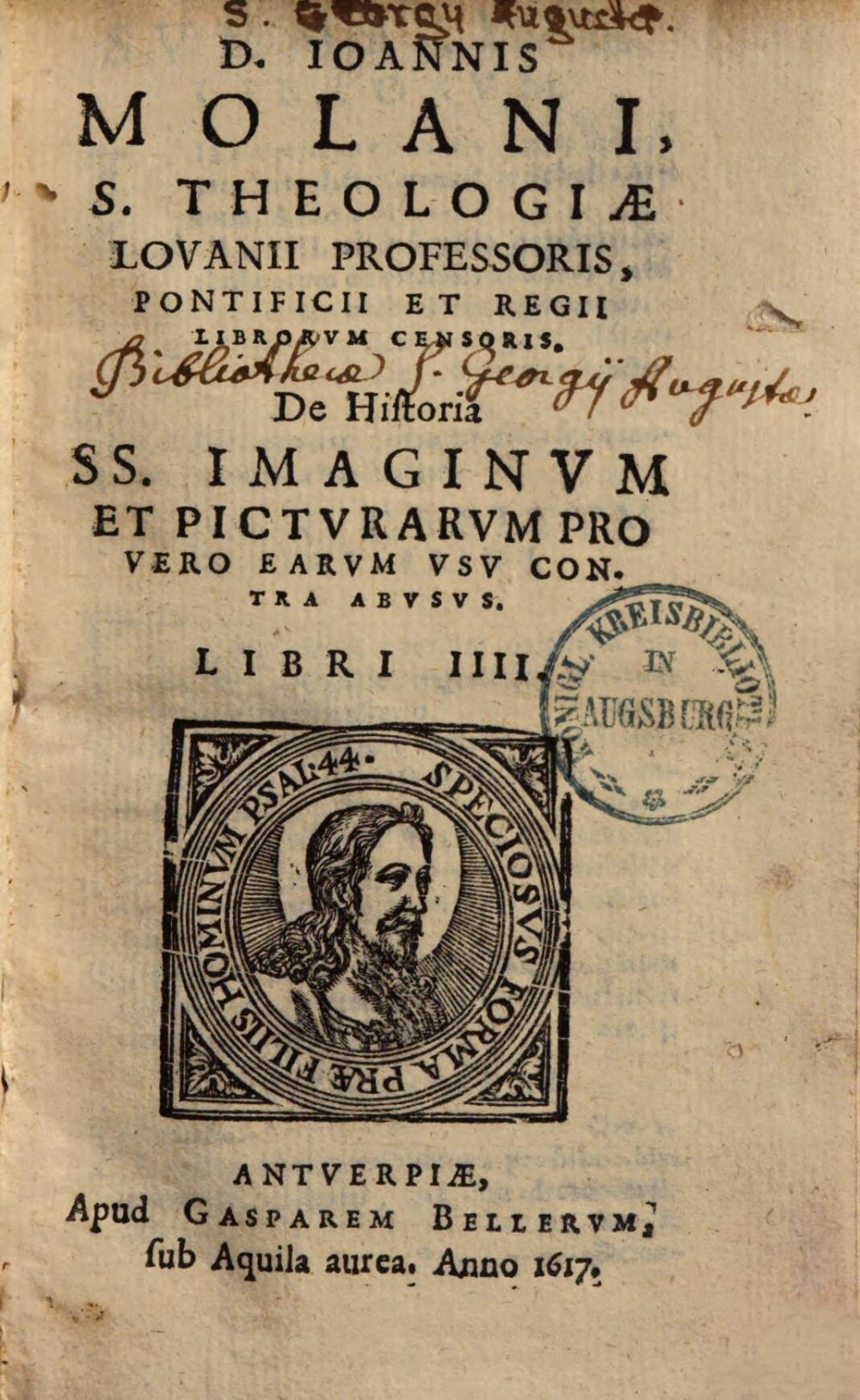
Augsburg, Staats- und Stadtbibliothek — Th H 1475. Digital Reproduction: München, Bayerische Staatsbibliothek, 2015.
Molanus condemns collecting and the display of profane statues as a sin.
“So far I have said nothing about those who take pleasure in evoking pagan paintings and statues, speaking as if for pleasure in paganism. Catharinus thus denounces them: Profane paintings and sculptures are the occasion of sin, and not a light one, when they search with great care for the idols of the pagan nations, to adorn their buildings by installing those that have been broken, and when they do so to make a spectacle of the memory of Anqituity and to exhibit the skill of the artists. It is reported that Blessed Gregory ordered the destruction of many of the statues in Rome because pilgrims and visitors to the basilicas of the saints were diverted from their pious works by their spectacle. The Lord commanded the Israelites: “Tear down their altars, break down their statues, cut down their sacred stakes, burn down their sculptures. You shall not covet the gold or silver of which they are made, nor take any of it, lest it is an abomination to you because it is an abomination to the Lord your God. You shall not bring into your house anything that comes from the idol, lest you become anathema to it. You shall hate it as filth, you shall abhor it as that which is foul because it is anathema.”
“Nihil hactenus dixi de iis, qui sicut libenter Ethnice loquuntur, sic etiam Ethnicas et Paganas picturas et statuas revocare gaudent. Quos Catharinus ita redarguit: ‘Peccatur in prophanis picturis sive sculpturis non modicum, dum magna diligentia Idola gentium exquiruntur, ut quae confractae erant erigantur ad ornandas aedes; spectaculi et memoriae antiquorum gratia et ostentanti arificum peritiam. Fertur Beatus Gregorius multas urbis statuas iussisse confringi, eo quod peregrini et qui basilicas sanctorum visitare veniebant, per illarum spectactula à pia illa opera distrahebantur.’ Dominus etiam Israelitis mandavit: ‘Aras eorum subvertite et confringite statuas lucosque succidite et sculptilia comburite. Non concupisces aurum et argentum de quibus facta sunt, neque assumes tibi ex eis quicquam ne offendas, propterea quia abominatio est Domini Dei tui, nec inferes quicquam ex Idolo in domus tuam ne sia anathema sicut et illud est. Quasi spurcitiam detestaberis, et velut inquinamentum ac fordes abominationi habebis quia anathema est.'”
Molanus 1996, 290.; Tilmann, Buddensieg, “Gregory the Great, the Destroyer of Pagan Idols. The History of a Medieval Legend Concerning the Decline of Ancient Art and Literature”, Journal of the Warburg and Courtauld Institutes 28 (1965): 44–65.



